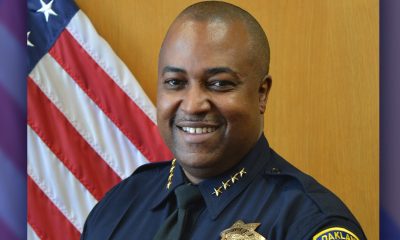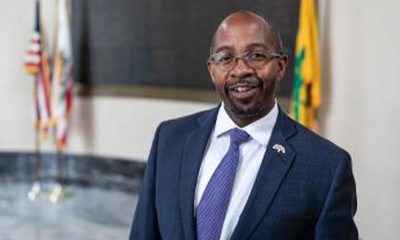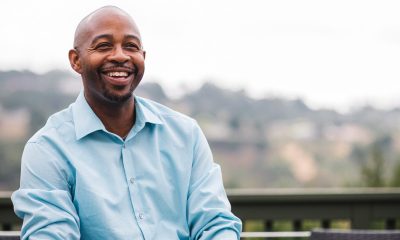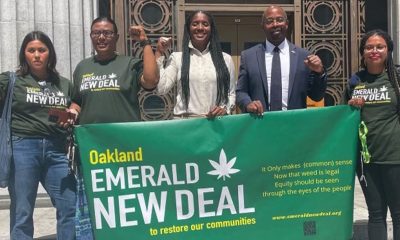Activism
Oakland Officials Present New Homeless Policy, Faces Criticism from Advocates
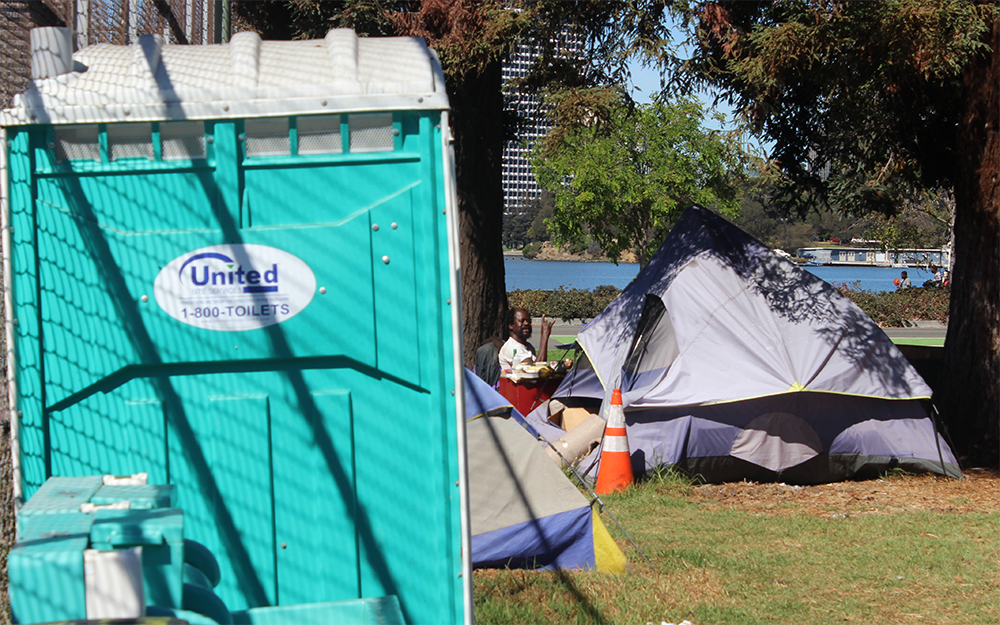
On Sept. 21, Oakland’s Homelessness Administrator Daryel Dunston shared recommendations with the Life Enrichment Committee (LEC) about new proposed regulations for managing areas where people experiencing homelessness live.
“In my humble opinion this policy is a step in the right direction, and I welcome the opportunity to strengthen the areas that may fall short in your estimation,” said Dunston during the meeting.
The Encampment Management Policy (EMP) outlined by Dunston and proposed by the City Administration, was largely based off of a report submitted in July that Joe DeVries, the director of Interdepartmental Operations, wrote.
The proposed EMP classified current areas where homeless people live as high-sensitivity areas and low-sensitivity areas. Language in the legislation suggests that low-sensitivity areas would be tolerated, but that, with some exceptions, living in high-sensitivity areas would not be tolerated.
“Encampments located within a high-sensitivity that are not approved by the City Council will be subject to a closure intervention,” reads the EMP.
While the EMP clearly defines high-sensitivity areas, low-sensitivity areas exist mostly by virtue of not being high sensitivity areas.
High-sensitivity areas exist within 150 feet of schools, within 25 feet of emergency shelter interventions, and within 50 feet of a protected waterway, residence, business, playground, public park, golf course, soccer field, baseball field, tennis court or basketball court.
“These are the high-sensitivity areas that we are recommending. And obviously, it will be up to the City Council to deliberate on these [distances],” said Dunston during the meeting. “Maybe you all decide that some of these distances are too narrow. Maybe you decide they could be expanded in some places.
Traffic lanes and bike lanes are also high-sensitivity areas.
“Essentially, everywhere else in the city that was just not described…would be become a low-sensitivity area,” said Dunston.
The EMP does not suggest any new services for homeless people but suggests expanding current services that already exist in some areas homeless people live.
These include hand-washing stations, portable toilets, weekly mobile showers, and waste collection. The waste collection does not include dumpsters and the city currently encourages residents to put their trash in piles.
City Council President Rebecca Kaplan and City Councilmember Dan Kalb both claimed they have heard complaints from residents that many toilets are not being serviced regularly.
Public comments on the EMP were mixed, with some residents supporting and some criticizing it. But homeless advocates, homeless advocate groups, and formerly and current homeless residents criticized it, claiming it expanded the criminalization of homelessness while not offering any new services.
They also criticized how the meeting was set up without including homeless people. While around 60 people gave public comments, only two people currently experiencing homelessness spoke.
Representatives from The Village, Love & Justice in The Streets, The Homeless Advocacy Working Group (HAWG), The Ella Baker Center, The Berkeley Free Clinic, and Shelter Oak all criticized the policy and suggested the LEC should not send the proposal to City Council, essentially asking them to ask the City Administration to create a new EMP. The Village, HAWG and Shelter Oak also sent e-mails to the city denouncing the current EMP.
“When taking into account all the locations listed as high-sensitivity areas, the policy would leave unhoused residents with effectively zero options as to where they can live without fear of displacement,” said Katie Kelly-Hankin of Love & Justice in The Streets. “Furthermore the policy lacks common-sense action steps to address the human rights crisis in our city, such as providing access to safe cooking facilities, safe electrical outlets, and offering hotel rooms to residents if and when encampments must undergo a deep cleaning.”
Kelly-Hankin asked that the LEC refer to suggestions outlined in an email ShelterOAK wrote to improve the EMP.
The LEC consisting of Kaplan, Kalb, and Councilmembers Lynette Gibson-McElhaney and Loren Taylor unanimously approved sending the proposed EMP to City Council but questioned whether the current low-sensitivity areas would offer enough and appropriate space.
They suggested exploring options for property, including unused county fairgrounds, which unhoused people could possibly live in. Kaplan specifically asked for the City Administration to offer a map of high-sensitivity and low-sensitivity areas to have a clear view of where homeless people could live under the policy.
The EMP is currently set to be brought to City Council on Oct. 20. It will not go into effect unless the council approves it.
Activism
Oakland Post: Week of April 17 – 23, 2024
The printed Weekly Edition of the Oakland Post: Week of April 17 – 23, 2024

To enlarge your view of this issue, use the slider, magnifying glass icon or full page icon in the lower right corner of the browser window. ![]()
Activism
Oakland Schools Honor Fred Korematsu Day of Civil Liberties
Every Jan. 30, OUSD commemorates the legacy of Fred Korematsu, an Oakland native, a Castlemont High School graduate, and a national symbol of resistance, resilience, and justice. His defiant stand against racial injustice and his unwavering commitment to civil rights continue to inspire the local community and the nation. Tuesday was “Fred Korematsu Day of Civil Liberties and the Constitution” in the state of California and a growing number of states across the country.
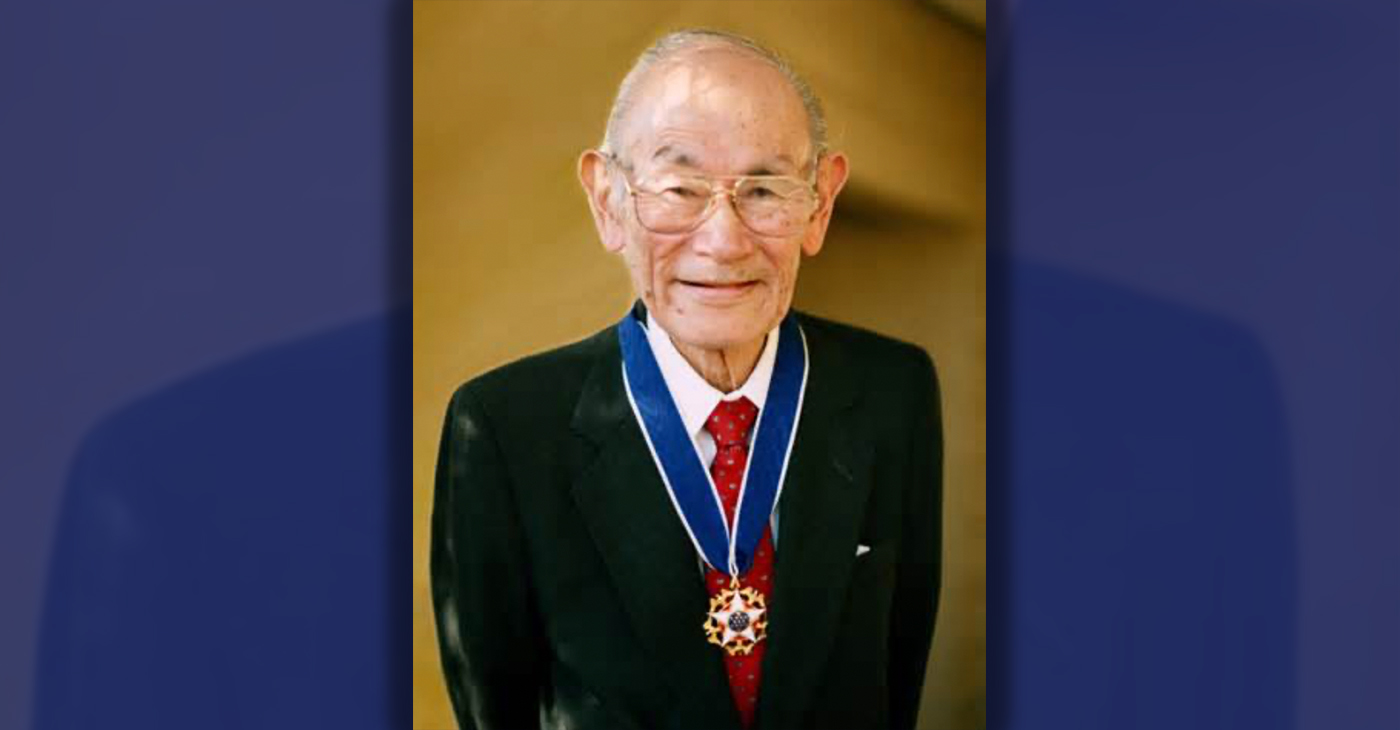
By Post Staff
Every Jan. 30, OUSD commemorates the legacy of Fred Korematsu, an Oakland native, a Castlemont High School graduate, and a national symbol of resistance, resilience, and justice.
His defiant stand against racial injustice and his unwavering commitment to civil rights continue to inspire the local community and the nation. Tuesday was “Fred Korematsu Day of Civil Liberties and the Constitution” in the state of California and a growing number of states across the country.
One OUSD school is named in his honor: Fred T. Korematsu Discovery Academy (KDA) elementary in East Oakland.
Several years ago, founding KDA Principal Charles Wilson, in a video interview with anti-hate organization “Not In Our Town,” said, “We chose the name Fred Korematsu because we really felt like the attributes that he showed in his work are things that the children need to learn … that common people can stand up and make differences in a large number of people’s lives.”
Fred Korematsu was born in Oakland on Jan. 30, 1919. His parents ran a floral nursery business, and his upbringing in Oakland shaped his worldview. His belief in the importance of standing up for your rights and the rights of others, regardless of race or background, was the foundation for his activism against racial prejudice and for the rights of Japanese Americans during World War II.
At the start of the war, Korematsu was turned away from enlisting in the National Guard and the Coast Guard because of his race. He trained as a welder, working at the docks in Oakland, but was fired after the bombing of Pearl Harbor in 1941. Fear and prejudice led to federal Executive Order 9066, which forced more than 120,000 Japanese Americans out of their homes and neighborhoods and into remote internment camps.
The 23-year-old Korematsu resisted the order. He underwent cosmetic surgery and assumed a false identity, choosing freedom over unjust imprisonment. His later arrest and conviction sparked a legal battle that would challenge the foundation of civil liberties in America.
Korematsu’s fight culminated in the Supreme Court’s initial ruling against him in 1944. He spent years in a Utah internment camp with his family, followed by time living in Salt Lake City where he was dogged by racism.
In 1976, President Gerald Ford overturned Executive Order 9066. Seven years later, the 9th Circuit Court of Appeals in San Francisco vacated Korematsu’s conviction. He said in court, “I would like to see the government admit that they were wrong and do something about it so this will never happen again to any American citizen of any race, creed, or color.”
Korematsu’s dedication and determination established him as a national icon of civil rights and social justice. He advocated for justice with Rosa Parks. In 1998, President Bill Clinton gave him the Presidential Medal of Freedom saying, “In the long history of our country’s constant search for justice, some names of ordinary citizens stand for millions of souls … To that distinguished list, today we add the name of Fred Korematsu.”
After Sept. 11, 2001, Korematsu spoke out against hatred and discrimination, saying what happened to Japanese Americans should not happen to people of Middle Eastern descent.
Korematsu’s roots in Oakland and his education in OUSD are a source of great pride for the city, according to the school district. His most famous quote, which is on the Korematsu elementary school mural, is as relevant now as ever, “If you have the feeling that something is wrong, don’t be afraid to speak up.”
Activism
WOMEN IMPACTING THE CHURCH AND COMMUNITY
Juanita Matthews, better known as “Sister Teacher,” is a walking Bible scholar. She moved to California from the great state of Arkansas in 1971. Sister Teacher has a passion for teaching. She has been a member of Bible Fellowship Missionary Baptist Church since 1971.
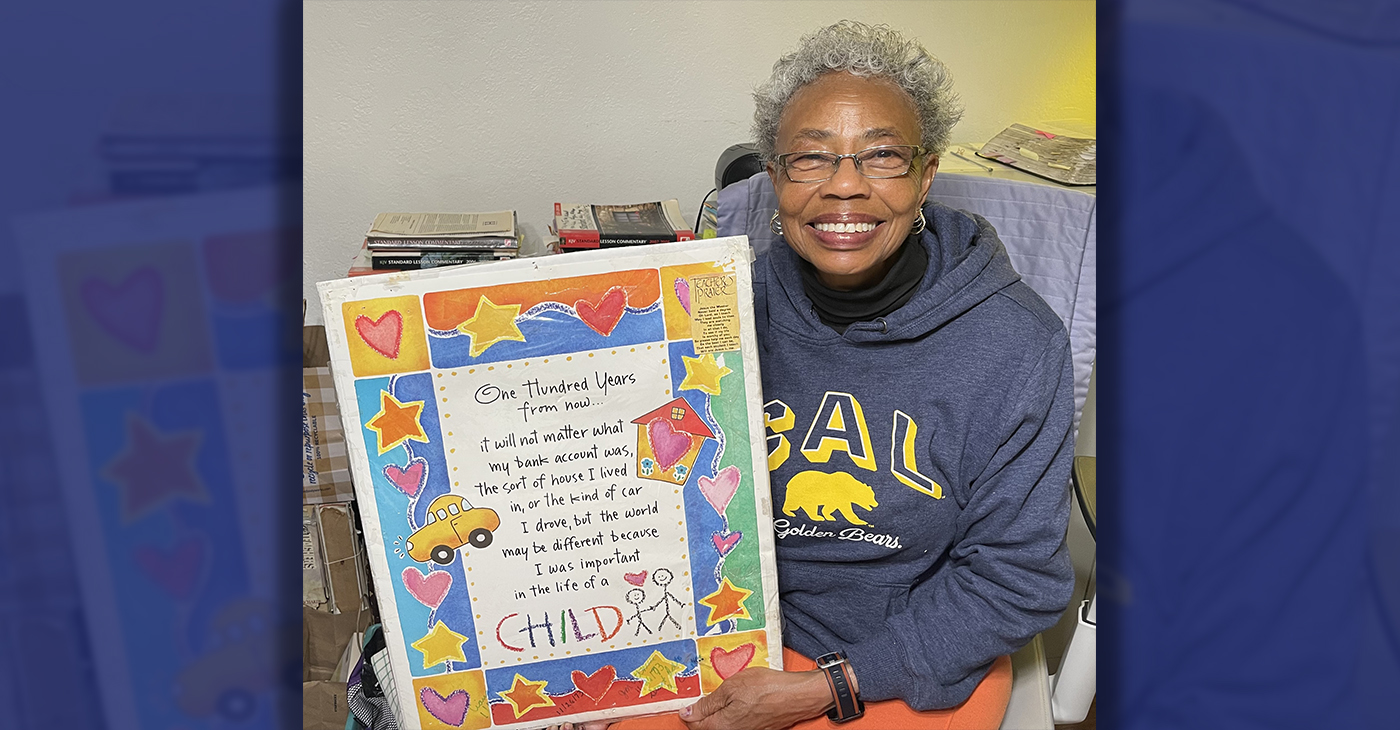
Sister Juanita Matthews
55 Years with Oakland Public School District
The Teacher, Mother, Community Outreach Champion, And Child of God
Juanita Matthews, better known as “Sister Teacher,” is a walking Bible scholar. She moved to California from the great state of Arkansas in 1971. Sister Teacher has a passion for teaching. She has been a member of Bible Fellowship Missionary Baptist Church since 1971. She followed her passion for teaching, and in 1977 became the lead teacher for Adult Class #6. Her motto still today is “Once My Student, Always My Student”.
Beyond her remarkable love for the Lord, Sister Teacher has showcased her love for teaching by working for the Oakland Unified School District for 55 years, all but four of those years spent at Emerson Elementary and Child Development School. She truly cares about her students, making sure they have the tools/supplies needed to learn either at OUSD or Bible Fellowship Missionary Baptist Church.
She’s also had a “Clothes Closet Ministry” for 51 years, making sure her students have sufficient clothing for school. The Clothes Closet Ministry extends past her students, she has been clothing the community for over 50 years as well. She loves the Lord and is a servant on a mission. She is a loving mother to two beautiful children, Sandra and Andre. This is the impact this woman of God has on her church and the community.
-

 Activism4 weeks ago
Activism4 weeks agoOakland Post: Week of March 27 – April 2, 2024
-

 #NNPA BlackPress4 weeks ago
#NNPA BlackPress4 weeks agoFrom Raids to Revelations: The Dark Turn in Sean ‘Diddy’ Combs’ Saga
-

 #NNPA BlackPress4 weeks ago
#NNPA BlackPress4 weeks agoCOMMENTARY: D.C. Crime Bill Fails to Address Root Causes of Violence and Incarceration
-

 #NNPA BlackPress4 weeks ago
#NNPA BlackPress4 weeks agoCOMMENTARY: Lady Day and The Lights!
-

 #NNPA BlackPress4 weeks ago
#NNPA BlackPress4 weeks agoMayor, City Council President React to May 31 Closing of Birmingham-Southern College
-

 #NNPA BlackPress4 weeks ago
#NNPA BlackPress4 weeks agoBaltimore Key Bridge Catastrophe: A City’s Heartbreak and a Nation’s Alarm
-

 #NNPA BlackPress4 weeks ago
#NNPA BlackPress4 weeks agoBaltimore’s Key Bridge Struck by Ship, Collapses into Water
-

 #NNPA BlackPress4 weeks ago
#NNPA BlackPress4 weeks agoBeloved Actor and Activist Louis Cameron Gossett Jr. Dies at 87


